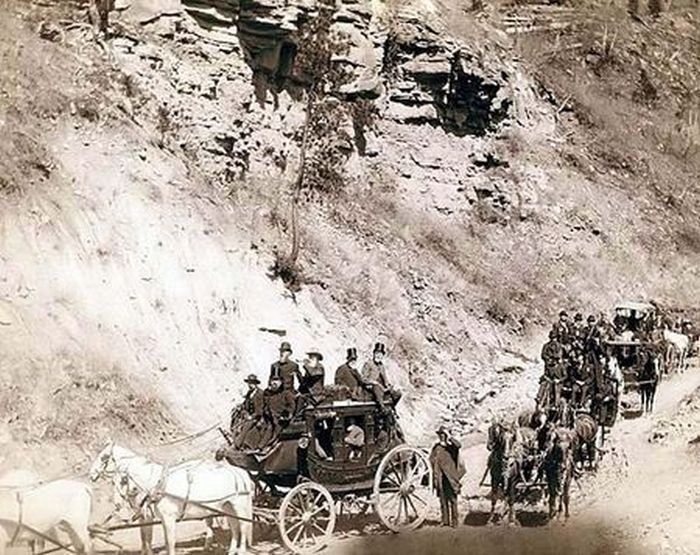|
|
History: American Old West, United States
|
The sharp decline of the herds of the Plains created a vacuum which was exploited by the growing cattle industry. Spanish cattlemen had introduced cattle ranching and longhorn cattle to the Southwest in the 17th century, and the men who worked the ranches, called "vaqueros", were the first "cowboys" in the West. After the Civil War―with railheads available at Abilene, Kansas City, Dodge City, and Wichita―Texas ranchers raised large herds of longhorn cattle and drove them north along the Western, Chisholm, and Shawnee trails. The cattle were slaughtered in Chicago, St. Louis, and Kansas City. The Chisholm Trail, laid out by cattleman Joseph McCoy along an old trail marked by Jesse Chisholm, was the major artery of cattle commerce, carrying over 1.5 million head of cattle between 1867 and 1871 over the 800 miles (1,300 km) from south Texas to Abilene, Kansas. The long drives were treacherous, especially crossing water such as the Brazos and the Red River and when they had to fend off Indians and rustlers looking to make off with their cattle. A typical drive would take three to four months and contained two miles (3 km) of cattle six abreast. Despite the risks, the long Texas drives proved very profitable and attracted investors from the United States and abroad. The price of one head of cattle raised in Texas was about $4 but was worth more than $40 back East.
By the 1870s and 1880s, cattle ranches expanded further north into new grazing grounds and replaced the bison herds in Wyoming, Montana, Colorado, Nebraska and the Dakota territory, using the rails to ship to both coasts. Many of the largest ranches were owned by Scottish and English financiers. The single largest cattle ranch in the entire West was owned by American John W. Iliff, "cattle king of the Plains", operating in Colorado and Wyoming. Gradually, longhorns were replaced by the American breeds of Hereford and Angus, introduced by settlers from the Northwest. Though less hardy and more disease-prone, these breeds produced better tasting beef and matured faster.
Then disaster struck the cattle industry. A terribly severe winter engulfed the plains toward the end of 1886 and well into 1887, locking the prairie grass under ice and crusted snow which starving herds could not penetrate. After their livestock died by the thousands, great syndicates and “barons”, already under pressure from declining prices and tightening credit, were financially ruined. Many of them had spent much more each year than they made to expand their land and cattle empires, but now they were forced to liquidate most of their remaining holdings just to pay for living expenses and to help satisfy a host of demanding creditors.
Sheep grazing took over as sheep were easier to feed and needed less water. However, sheep also helped cause ecological changes that enabled foreign grasses to invade the Plains and also caused increased erosion. Open range cattle ranching came to an end and was replaced by barbed wire spreads where water, breeding, feeding, and grazing could be controlled. This led to "fence wars" which erupted over disputes about water rights. Cattlemen and sheep ranchers sometimes engaged in violence against each other as did large and small cattle ranchers, culminating in the Johnson County War.
|
|









